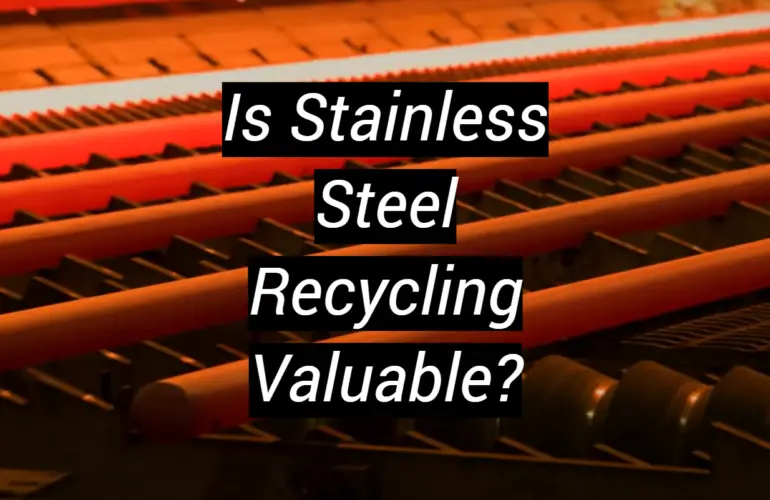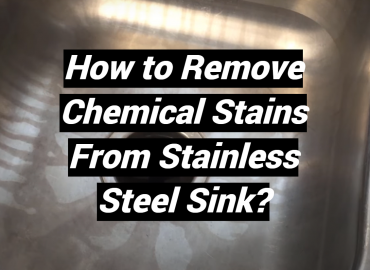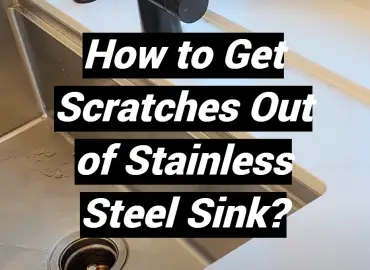Stainless steel is a popular material used in construction, appliances, and other products due to its durability and corrosion resistance. But with the increasing global demand for metal, the need to recycle and reuse stainless steel is becoming more important. Does recycling stainless steel make a difference in preserving resources? Explore the economic and environmental benefits of recycling stainless steel and some of the challenges associated with it.
Why Stainless Steel Recycling Is Valuable?
Stainless steel is one of the most valuable materials to recover. Here are a few reasons why [1]:
It Has a Longer Lifespan Than Other Metals
Stainless steel is one of the most durable metals available. It can last for decades, or even centuries when properly taken care of and maintained.

It makes it perfect for recycling since it will not need to be replaced as often as other materials, such as aluminum or iron.
It Is Made From A Variety of Metals
Stainless steel contains ingredients like nickel, chromium, molybdenum, manganese, and titanium. This multi-metal makeup gives stainless steel its superior strength and corrosion resistance that make it highly sought after in many industries. Recycling stainless steel allows for these metals to be reintroduced into the market with minimal environmental impact.
It Is 100% Recyclable
Stainless steel is 100% recyclable and can be recycled again and again without any loss of quality. It makes it a great choice for sustainable projects, as the material can be used multiple times over its lifetime rather than being thrown away after only one use.
It is Graded and Comes in Different Forms
Stainless steel comes in different grades depending on the type of metals it contains. When recycling stainless, these materials are separated based on their grade and form (sheet metal, wire rods, etc.) to ensure that they are properly recycled according to their specifications.
Prices for Stainless Are Usually Decent in the Scrap Metal World
The scrap value of stainless steel is usually competitive and can vary depending on the grade, form, and size of the material being recycled. Prices for stainless steel are usually higher than those of other metals since it has a longer lifespan and is more durable. It makes it an ideal choice for scrap metal recycling.
Can Stainless Steel Be Recycled?
Yes, it can. Stainless steel may be recycled several times without losing its quality.
What Are the Advantages of Recycling Steel?
Stainless steel recycling offers many advantages that make it a smart choice for businesses and individuals. Here are some of them [2]:
Stainless Steel Is Easy and Efficient to Recycle
Stainless steel is a relatively easy material to recycle. It can be broken down into two categories – ferrous and non-ferrous metals:
- Ferrous stainless steel contains iron, which is magnetic and can be separated through a magnetizing process;
- Non-ferrous stainless steel does not contain iron and must be melted down to separate the different elements that make up the material.
Stainless Steel Recycling Provides Value
Stainless steel recycling provides businesses with an opportunity to receive money for their scrap metal by selling it to recyclers or scrap yards. Recycled stainless steel saves energy because it requires less energy to produce than new stainless steel from virgin materials. It reduces pollution as fewer resources are needed in its production and transportation processes.
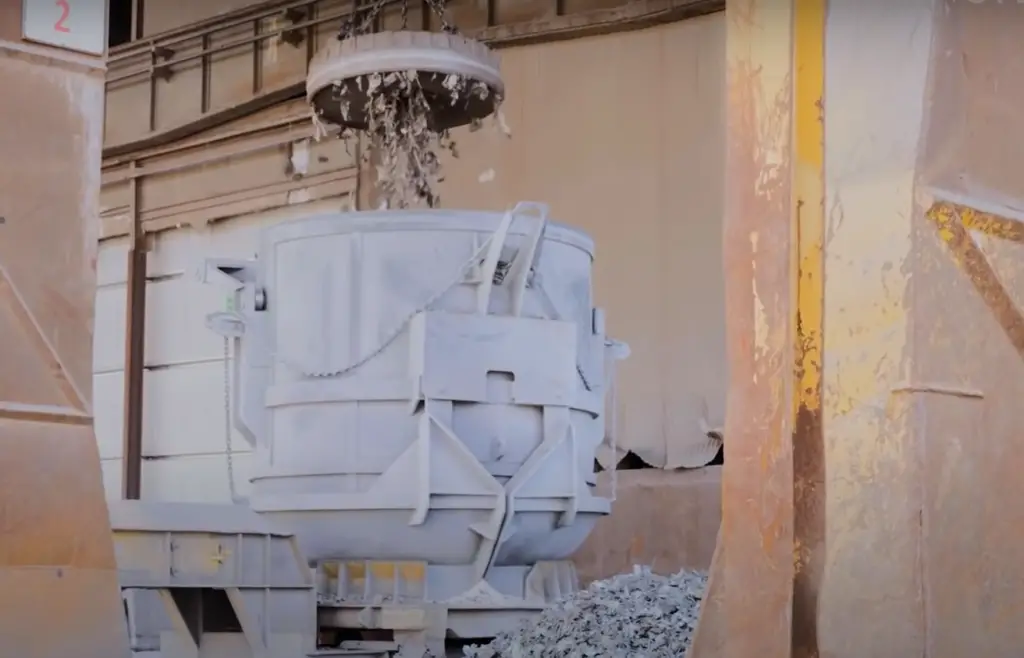
When products made from recycled stainless steel are used, fewer new products need to be manufactured. This reduces the amount of energy and resources needed for production, resulting in environmental benefits.
What Is a Disadvantage of Recycling Steel?
There are a few disadvantages of stainless steel recycling that should be considered before committing to this practice:
Stainless Steel Recycling Value
The scrap value of stainless steel depends on the grade, form, and size of the material being recycled. Prices for stainless are usually higher than other metals due to their longer lifespan and durability. Depending on market fluctuations, the value of stainless steel recycled can vary;
Heat Distortion and Work Hardening
Heat distortion is a common issue when welding or cutting stainless steel due to its high heat resistance. It can make it difficult to weld and cut recycled stainless steel without distorting the metal. Work hardening occurs when stainless steel is heated again and again after being recycled multiple times, reducing its ability to take shape properly during manufacturing processes;
Separating Stainless Steel for Recycling
Separating different grades of stainless steel for recycling can be time-consuming and costly due to the complexity of separating them by grade, form, and size. Different grades must be separated for recyclers to get the best price possible for the material. This process can also be labor intensive and require special equipment.
Recycling stainless steel offers many economic and environmental benefits when done correctly, but some potential disadvantages should be considered before committing to this practice.
Where Is Stainless Steel Recycled?
Stainless steel can be recycled at the following locations [3]:
- Scrap yards;
- Recyclers;
- Metal refineries.
Many businesses and individuals also sell their steel scrap to recycling centers for cash. In addition, many cities have curbside collection programs for residents to recycle their metal waste. When it comes to larger-scale projects that involve large amounts of stainless steel, such as the construction of industrial buildings or bridges, recycling centers often provide on-site services for convenience.
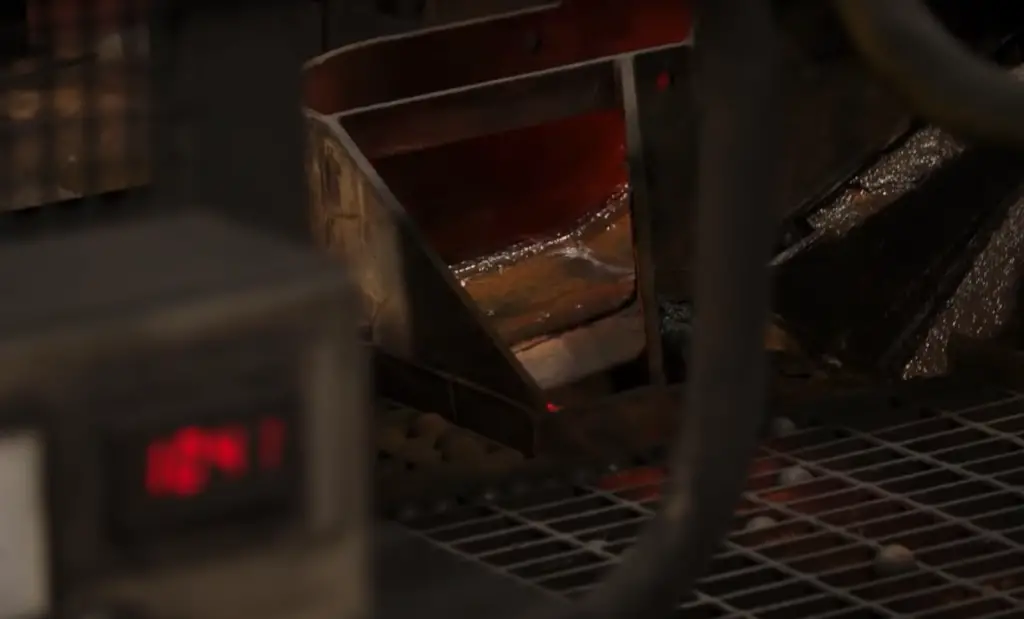
Almost any stainless steel product can be recycled, including sheet metal, wire rods, nuts and bolts, appliances, and kitchenware items. Most scrap yards cater to residential and commercial customers looking to recycle their stainless steel products. Some scrap yards also offer services such as cutting, shearing, or pressing the material into new shapes for reuse in future projects. Some recyclers specialize in certain grades of stainless steel such as high-grade or low-grade alloys to make sure that the recycled material meets industry standards.
Recycling your stainless steel is a great way to save money while reducing your environmental impact. By properly identifying and separating different grades of stainless steel for recycling you can ensure that your discarded waste is put to good use. With the right resources, recycling stainless steel can be a simple and rewarding process.
How to Identify Valuable Stainless Steel Scrap
Identifying the value of stainless steel scrap can be difficult, but by understanding the specific characteristics of the material, it is possible to distinguish between valuable scrap and regular steel or aluminum.
Distinguishing Stainless Steel From Regular Steel
Stainless steel can be identified by its bright silver appearance when compared to regular steel, which has a dull gray color.
It can also be distinguished from other metals such as aluminum by examining the surface for small pinholes in the material – aluminum does not have these holes, while stainless steel does.Distinguishing Stainless Steel From Aluminum
It can be difficult to distinguish stainless steel from aluminum at first glance since both materials are similar in appearance. To tell them apart, examine how they react to magnets – stainless steel is magnetic and aluminum is not. Aluminum has a duller surface, while stainless steel tends to be shinier. To further test the material’s identity, use a spark tester or file the material to see if it produces sparks – stainless steel will produce sparks when dragged along a piece of metal but aluminum will not.
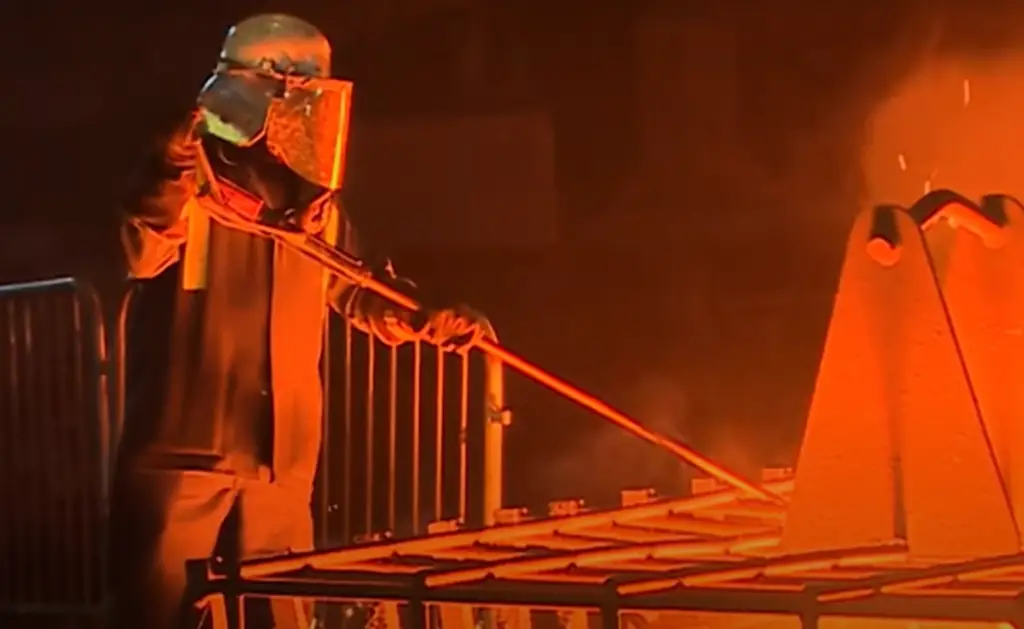
Ultimately, by understanding the differences between regular steel, aluminum, and stainless steel you can more easily identify valuable scrap for recycling. With these tips in mind, identifying and valuing your stainless steel scrap should become easier.
How To Recycle Stainless Steel
Recycling stainless steel is an eco-friendly process that can help reduce your environmental impact while saving money. It involves identifying and sorting different grades of stainless steel, shredding it for transport, melting the metal to create new products, and drawing or rolling out the material into sheets and wires. Here is a step-by-step guide on how to recycle stainless steel [4]:
Step 1. Collection
The first step in recycling stainless steel is collecting scrap materials from industrial sites, businesses, or individual consumers. Recyclers should be sure to separate different grades of stainless steel based on their chromium content (or other alloying elements) before transporting them to a sorting facility.
Step 2. Sorting
Once the scrap metal has been collected, it must be sorted according to its grade and form. Stainless steel is sorted by placing a magnet over each piece and separating the magnetic metals (stainless steel) from the non-magnetic ones (aluminum). Different grades of stainless steel are identified using color codes or spectrometer readings to determine their chromium content.
Step 3. Shredding
After sorting, the scrap metal must be shredded into small pieces for easier transport and melting. Scrap yards often use large industrial shredders to break down stainless steel sheets into manageable chunks for transport.
Step 4. Melting
Once all the stainless steel scrap has been collected and shredded, it should be melted in a furnace at high temperatures. During this process, impurities such as paint, grease, and dirt are burned away while the steel is melted into a molten form.
Step 5. Casting
After melting, the stainless steel can be cast into new products such as pipes or plates. It involves pouring the molten metal into molds of various shapes and sizes to create the desired product.
Step 6. Rolling and Drawing
For thinner products like wires or sheets, rolling and drawing processes are used to achieve their desired shape and thickness. During this process, the stainless steel is passed through large rollers that flatten it out or draw it out using dies of different shapes.
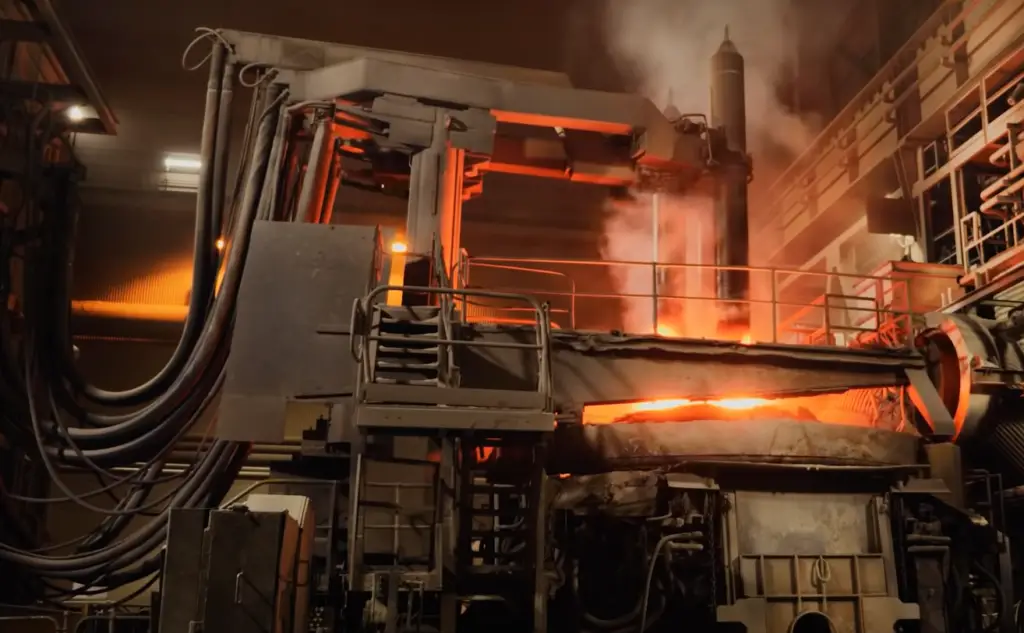
Once all these steps have been completed, recycled stainless steel is ready for reuse in any number of applications. Recycling stainless steel not only helps reduce your environmental impact but can also save you money in the long run. By properly sorting and identifying different grades of stainless steel, it’s possible to maximize profits while still reducing waste.
How To Store And Transport Stainless Steel
Storing and transporting stainless steel can be tricky due to its tendency to corrode or rust when exposed to moisture. To avoid damage, it’s important to properly store and transport stainless steel products before they are recycled. Here are some tips on how to store and transport stainless steel [5]:
- Storage: When storing stainless steel products, make sure that they are kept away from direct sunlight and other sources of heat as this can cause them to discolor or tarnish over time. Store it in a cool, dry place to ensure that moisture does not accumulate on the surface and cause corrosion;
- Transport: When transporting stainless steel products, make sure that they are properly covered with tarpaulins or plastic sheets to protect them from rain or other sources of moisture. You should secure the products with straps to avoid any shifting of the load during transport.
FAQs
How Much Is Stainless Steel Worth Per Gram?
The current market value of stainless steel is around $0.75 per gram. However, this price can vary significantly based on the grade and type of stainless steel being recycled.
Is Stainless Steel Worth More Than Gold?
No, it is not. Stainless steel is not worth more than gold. Gold is a precious metal and is much rarer than stainless steel.
Is Stainless Steel in High Demand?
Yes, it is. Stainless steel is in high demand due to its durability and corrosion resistance. It is a popular material used in construction, appliances, and other products. The demand for stainless steel is increasing globally.
What Is the Lifespan of Stainless Steel?
Stainless steel has a long lifespan compared to other metals. It is estimated that stainless steel will last up to 100 years when properly cared for. Depending on the grade of stainless steel, it can also be highly resistant to corrosion and wear. Its strength and durability make it a great choice for many applications.
How Do You Remove Gold From Stainless Steel?
Gold can be removed from stainless steel by using a technique called “solvent extraction”. This process involves immersing the stainless steel in a chemical solution that will dissolve the gold. The solution is then filtered to remove the dissolved gold, leaving behind a clean stainless steel surface. Another method is to electroplate the stainless steel with gold plating. It will create a layer of gold on the surface of the metal, which can easily be removed.
Can Stainless Steel Rust?
Yes, stainless steel can rust. It is resistant to corrosion, but not completely immune. Factors such as environmental conditions and exposure to certain chemicals can cause stainless steel to corrode over time. To reduce the risk of rust, you should clean and maintain the surface of stainless steel regularly.
Does Salt Damage Stainless Steel?
Yes, it does. Salt can damage stainless steel. Salt is a highly corrosive material and exposure to it can lead to pitting or corrosion on the surface of stainless steel. You should rinse and dry the surface after any contact with salt to prevent damage. Use cleaners specifically designed for stainless steel to prevent further damage.
What Kills Rust on Stainless Steel?
There are several methods for removing rust from stainless steel [7]:
- You can use a mild acid like vinegar or lemon juice to dissolve the rust or a commercial rust remover to dissolve and remove the rust. When using a chemical cleaner, take precautions to ensure it is safe for stainless steel;
- Another way to kill rust on steel is by using abrasive cleaning techniques like sanding or a wire brush. After removing the rust, you should clean and maintain the stainless steel surface regularly. It will help prevent further rusting down the line.
What Weakens Stainless Steel?
Exposure to certain chemicals, environmental conditions, and high temperatures can weaken the strength of stainless steel over time. High levels of chlorides or other corrosive compounds can cause corrosion, which can weaken the steel. Additionally, using stainless steel at temperatures above 600F can cause the structure of the metal to change, resulting in a decrease in strength and durability.
Useful Video: Stainless steel: Recycled for lasting value
Conclusion
Recycling stainless steel is highly valuable for economic and environmental reasons. It has a longer lifespan than other metals, is 100% recyclable, and provides decent prices when sold as scrap metal. Recycling stainless steel also reduces the need to mine and extract metals which can be damaging to our environment. Despite some challenges such as heat distortion or work hardening, with proper techniques and maintenance, recycling stainless steel is a great way of preserving resources while still providing value.
References:
- https://www.scrapmartmetals.com/2021/10/11/why-stainless-steel-recycling-is-valuable
- https://industrialmetalservice.com/resources/the-advantages-and-disadvantages-of-stainless-steel-recycling-and-reuse/
- https://www.unifiedalloys.com/blog/recycling-stainless-steel
- https://www.montanstahl.com/blog/recycling-stainless-steel/
- https://www.steeltd.com/news/storage-and-maintenance-of-stainless-steel.html
- https://sevenrocks.co.uk/blogs/news/white-gold-vs-stainless-steel-whats-the-difference/
- https://www.homedit.com/cleaning/remove-rust-from-stainless-steel/

